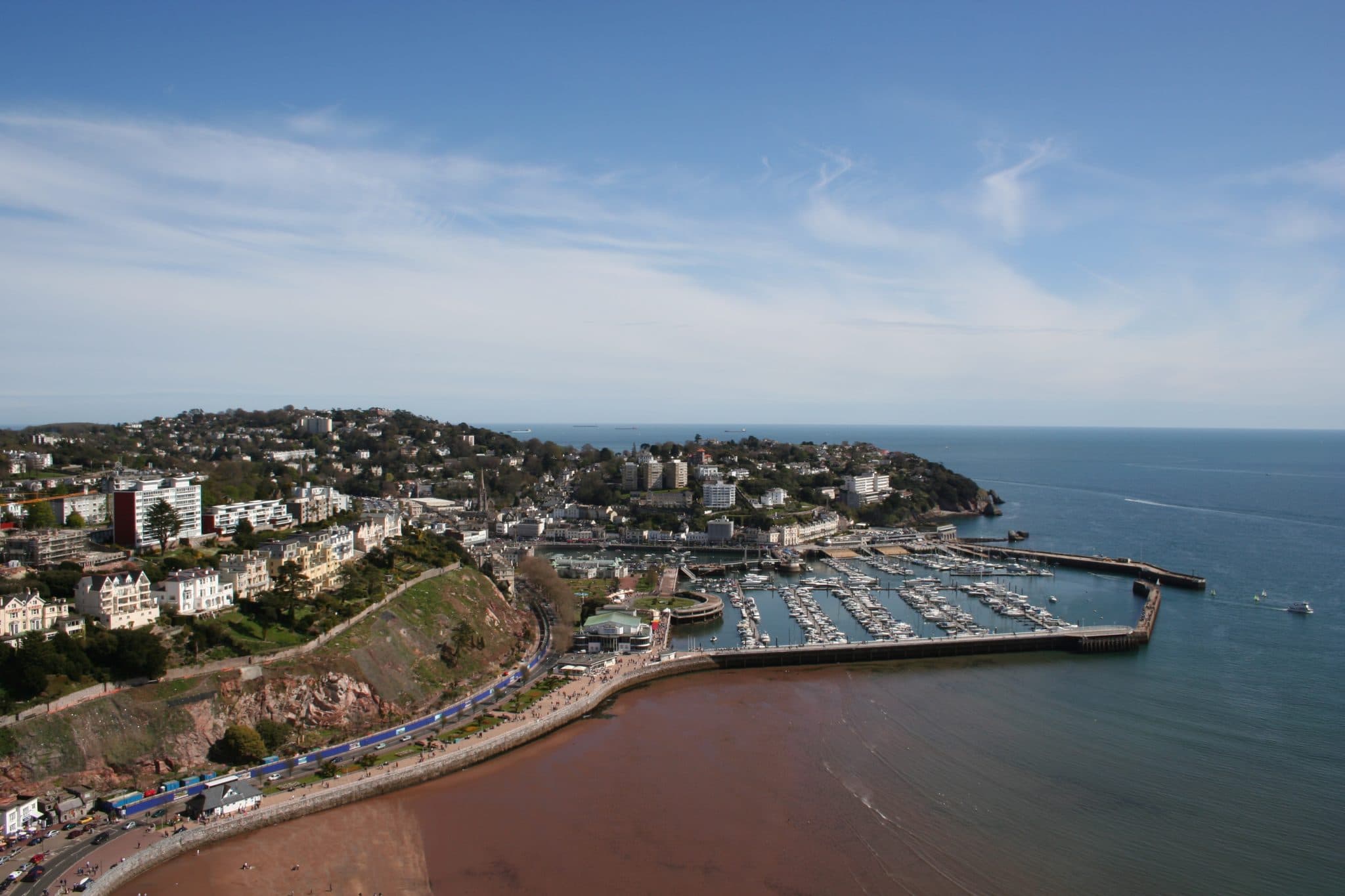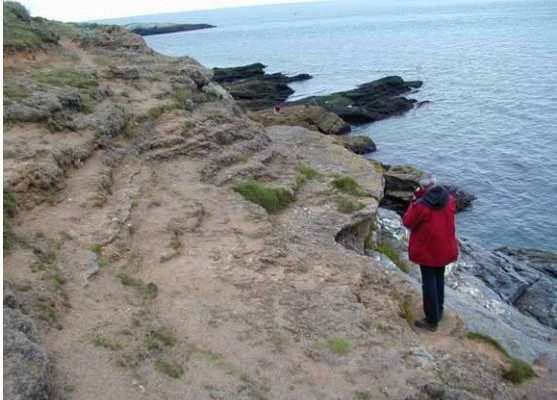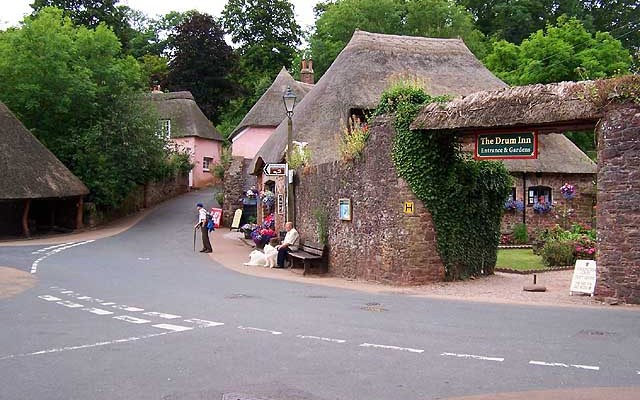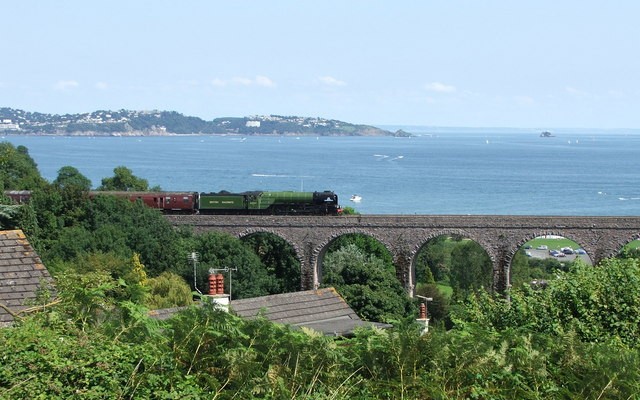Interesting information
The South West Coast Path is justifiably renowned for the quality of its walking experience, with its high cliffs, wooded estuaries and sandy beaches. However, it is worth remembering that it also offers superb walks where is passes through some of Devon’s seaside towns. In winter or early spring especially, when some of the more remote parts of the coast can be damp or muddy, these urban Coast Path walks are well worth doing.
Torquay began to arise as a resort for the well-to-do when the fleet of the Royal Navy used Tor Bay as an anchorage during the Napoleonic Wars.
It became fashionable for naval officers and their families during the first half of the 19th century. This prompted the building of many large and fashionable villas as well as exclusive hotels as Torquay aimed at the higher end of the market.
This holiday trade was given an especial boost after the railway arrived in 1848.
The Inner Harbour dates back to the beginning of Torquay’s expansion, in 1806. It was established by Lord Haldon of the Palk family who at that time owned large tracts of land in and around Torquay. After the Outer Harbour was built later in the 19th century it had for a while an emigrant trade to Canada.
The church Holy Trinity, was built 1894-96. It became redundant as a church and was converted for use as a sports centre in 1982. It is now the Rainbow Fun House for children, but remains a significant local landmark with its prominent spire.
The walk enters Lincombe, an area of Torquay developed with exclusive villas for the well-to-do during the 19th century. They remain impressive houses.
Lincombe Drive passes more imposing Victorian villas, especially on the right hand seaward side. In contrast on the inland side is an area of more modern development. This whole area was owned by the Palk family in the 1800s, and it was the manager of the Palk Estate, William Kitson, who effectively shaped this part of the town. Further on the road begins to run along the top of a steep, wooded slope which forms the cliff above Meadfoot Beach. The walk now gives views out to sea through the trees, and the sound of the sea on the beach can be heard. The feeling here is very rural.
This unexpected building was originally a folly designed as an entrance gateway to the garden of the early 20th century house of Castle Tor above. It was originally designed by Fred Harrild in the 1930s; he was a pupil of the renowned architect Edwin Lutyens and those who know Castle Drogo, designed by Lutyens, may be able to see a resemblance.
If the weather is clear, views open up to the distinctive red cliffs of the East Devon coast.
It is worth taking the short diversion along this path to Kent’s Cavern and, if you have the time, looking around the caves. They comprise a series of connected limestone caves and from the dates scratched in the walls have been considered a curiosity since the 16th century. Human beings inhabited the caves in prehistoric times with sabre-toothed tigers, woolly rhinoceros and mammoths. There is a shop with information, toilets and a restaurant.
Although now hidden in Torquay’s suburbs, Ilsham has a longer history, being mentioned in the Domesday Book. There is also a medieval house which was used as a grange by Torre Abbey.
Meadfoot gives views over the whole sweep of Tor Bay, with Berry Head the prominent landmark at the far side of the Bay.
On the opposite side of the road here is the imposing sight of Hesketh Crescent, one of Torquay’s most notable buildings. It dates from 1849, again built on the Palk estate and when completed included a hotel and ten large houses for rent.
Daddyhole Plain gets its name from a 19th century cliff landslide which was attributed to the devil, or Daddy to use the local name. It is a good viewpoint to look over the villas in Palk’s estate inland (and some more modern development) and also for splendid sea views.
Rock End Estate was used to be part of the grounds of a grand house built in the 1840s. The house was later demolished and the estate developed for housing in 1950. The Coast Path generally avoids these houses and continues to give superb views over Tor Bay.
Peaked Tor is a public space, this was a public terraced garden in the later 19th century, the beach below being used as a gentleman’s bathing cove. The pill box is a World War 2 mine watcher’s post from where mines protecting Torquay Harbour would have been remotely detonated. It has now been adapted to make it a suitable roost for bats.
The Imperial, although now somewhat altered, was Torquay’s first major hotel, dating from 1863. Another Palk venture, it encouraged many notable people to visit the town, including in 1877 the then Prince of Wales, later King Edward VII.
An offshoot of Paignton Zoo, Living Coasts includes reconstructed beaches, artificial cliff faces and estuary features. There is an aviary of sea birds (you may see some flying inside the net mesh) and viewing areas for seals. It includes a shop and restaurant.



